I traded 100 TIMES with the Stochastic Trading Strategy but the win rate was…
How good of an indicator stochastic really is on its own? Is stochastic Trading Strategy a profitable trading strategy? In the last video, we tested a trading strategy 100 times, where entry signals were generated by using the MACD and Stochastic indicator. The win rate was good enough to make a decent profit in the long run, but it was not as good as the win rate the MACD strategy achieved on its own. We have already tested both MACD and Stochastic RSI trading strategy 100 times to find their approximate win rates. MACD had an excellent win rate of more than 60 percent even with a reward to risk ratio of 1.5 to 1. Stochastic RSI on the other hand, only had an approximate win rate of 46 percent. Even though stochastic and stochastic RSI are not exactly the same thing, there is a good chance that the profitable win rate we got with MACD Stochastic strategy in the last video, is highly based on the MACD indicator alone. In other words, there is a chance that the stochastic indicator doesn’t have a very good win rate, just like the Stochastic RSI indicator. So to find out if the Stochastic Trading Strategy is a profitable trading strategy or not, and to find its approximate win rate, I tested it 100 times, just like other trading strategies we have tested on this channel.
Stochastic is a popular indicator that is used to find the over bought and over sold zones. It was developed in 1950s, and since 1950s markets have changed. Today, almost anyone can create a trading account, but back in those days, trading was less liquid because trading stocks was less accessible. Back then if the price of a stock was in a range, indicators like the stochastic would have worked excellently, as they are designed to find the overbought and oversold zones. Now, most people find reversal trading difficult, and trade with the trend instead to catch the big move. There are modified stochastic strategies but the entry signal almost always remains the same. Buy when the stochastic says oversold, and sell when the stochastic says over bought, nothing less nothing more.
If you plot the Stochastic indicator on Trading View, you will noticed that it comes with K and D lines, and the Upper and Lower Bands. K is the stochastic value line, and D is a 3 period moving average of the K line. In simple words what the stochastic indicator really does is, compare the closing price of a stock or forex pair to a range of its prices. When the K line goes below the lower band of the stochastic indicator, the price is considered to be over sold and you should look to buy. Similarly, when the K line goes above the upper band of the Stochastic indicator, price is considered to be overbought and you should look to sell.
Usually, many traders will buy when the K line crosses above the D line below the lower band. Similarly, many traders will sell when the K line crosses below the D line above the upper band of the stochastic indicator. It is said that price reverses after stochastic gives a crossover above and below these bands. But price movement is not always that simple. Sometimes, price can give multiple crossovers and still continue to move further in one direction.
So instead of buying immediately at the crossover, it is a good idea to buy and sell when the K line comes out of the over sold and over bought zones respectively. Furthermore, it is a good idea to trade in a direction where the price is already heading. This way you can achieve a higher reward to risk ratio, and you can use the 200 period moving average to find that direction. Here’s how the complete Stochastic trading strategy goes.
If the price is above the 200 period moving average, the buy entry is when the K line comes out of the oversold zone. In this case, the over sold zone is below 20. You can set the stop loss below the swing low of the trend. Similarly, if the price is below the 200 period moving average, the sell signal is when the K line comes out of the over bought zone. Here the over bought zone is above 80. You can set the stop loss above the swing high.
The Stochastic indicator is well known to produce a lot of false signals. It can work great in a range where the price is literately moving between two levels. But as you already know, price action can be really choppy in a range market and price won’t always move between two price points forever. For a beginner trader, trading a trend can be much easier compared to trading reversals. In this Stochastic strategy, we are not only using the 200 period moving average to filter the false entry signals giving by the stochastic indicator, but we are also using it to find the direction of the long term trend.
So, I tested the Stochastic Trading Strategy 100 times, here’s what I found.
Number 1. When compared to some other indicators we have tested on the Trading Rush Channel, you will notice that the price action has to be really clean for the stochastic indicator to work. By using the 200 period moving average, we avoided most of the false signals. Since price can go sideways for a while in a long term trend, some trades were taken in the direction of the trend while still being in a temporary range market. For example, when price was below the moving average but was moving side ways, trades were taken in the downward direction. Some of them worked. But even though the stochastic indicator is designed to work in a range market, many trades that were taken during the short term sideways market, did not work. In some cases, the price even went back into the oversold and over bought zones after giving the entry signals. Stochastic indicator should not be used on its own to find trading opportunities. It is not good as the other indicators we have seen on the Trading Rush Channel. Some indicators we tested previously, were able to give much accurate entry signals than the stochastic.
After testing the Stochastic indicator 100 times, I got the win rate of approximately 41 percent with a 1.5 to 1 reward risk ratio. On the profit graph it shows a profit, but since this is an approximate win rate, the stochastic trading strategy is more of a hit or miss strategy. We have seen other indicators produce win rates that were more than 55 percent, so you are probably better off with those indicators instead of using this. If you take the Stochastic RSI’s data for comparison, we can see that, when we tested the Stochastic RSI Trading Strategy, it showed better profit potential than this. Furthermore, the profit on the profit graph of the Stochastic RSI, looks much better and consistent than what we got here. Stochastic indicator gives a lot of false signals, and that is the last thing we need to make money in trading.

